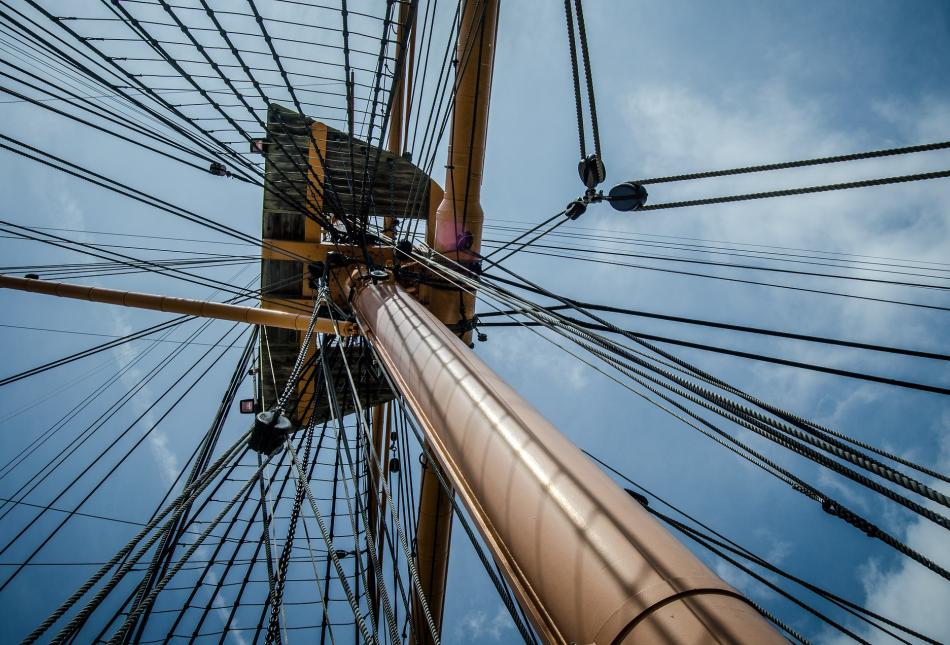
Portsmouth Aviation has clients all over the world, but the city from which we take our name has been contributing to the field of engineering for far longer than we’ve been in existence. Today, we explore some examples from through the years of this proud naval city which we call our home having a truly global impact, just as Portsmouth Aviation strives to.
Isambard Kingdom Brunel
One of the most famous engineers in recorded history was born in Portsmouth, reportedly at number 1 Britain Street. Brunel is remembered for his contribution to railways, bridges, and shipbuilding/design. Examples of his work can still be seen today; Clifton Suspension Bridge proudly stands astride the River Avon and Avon Gorge, linking Clifton in Bristol with Leigh Woods in North Somerset. Also in Bristol, the SS Great Britain sits in a dry dock and is visited by around 150,000 people each year.
While it would be dwarfed by the aircraft carriers and cruise liners seen at Portsmouth Harbour today, when it was launched in 1845 the SS Great Britain was the largest ship in the world, and it was the first Iron Steamer to cross the Atlantic. Another Brunel-designed first was the Thames Tunnel. Now part of the East London Line on the London Overground, upon completion in 1843 it was the first tunnel successfully constructed under a navigable river – arguably a precursor to every underwater tunnel that has come since. Whilst these landmarks are not in Portsmouth, Isambard Kingdom Brunel is immortalised in the city with multiple memorials as well as a pub, a road, a car park and, until recently, a school bearing his name.
Cyberdyne Systems Model 101 (The T-800)
Film fans will notice that the above is popularly known as “The Terminator”. Unless you’ve spent time in Portsmouth, you may not be aware that Arnold Schwarzenegger lived and trained in the city for a period during the 1960s. If you have spent time in Portsmouth, you would almost certainly have known that already – it’s a regularly shared “fun fact” for local residents and media outlets alike. This list may predominantly be about more literal feats of engineering, but it shouldn’t be ignored that this city played a part in “The Austrian Oak” engineering his body into the form that made him one of the most famous machines in the world – The Terminator.
Portsmouth Block Mills
Among the first examples of mass-production in the world, it’s difficult to think of many more influential feats of engineering when you consider the way manufacturing is done around the globe today. Portsmouth’s block mills were designed by Marc Isambard Brunel. The familiar name is no coincidence, he was the father of Isambard Kingdom Brunel – indeed, Marc’s involvement in the block mills is one of the main reasons that his son was born in Portsmouth. The Royal Navy used thousands of wooden blocks (parts of a pulley system) in its ships – over 100,000 needed to be produced on average in a given year, each made by hand which meant slow, labour-intensive, and inconsistent work. That was until the introduction of the revolutionary mill between 1803 and 1807. The mills’ machines utilised steam power and could be operated by labourers rather than skilled craftsmen who would need to spend several years in an apprenticeship. They increased productivity per person by approximately 1,000%.
Dry Docks
Another Portsmouth-based first came in 1495 when Henry VII built a dry dock in the area which still houses the historic dockyard to this day. With construction reportedly costing an enormous 193 pounds, 6 pence, and 3 farthings, you’d expect this to be a state-of-the-art facility and, for its time, it was. There is some debate around whether this was the first dry dock in the world – some historic documents record similar spaces in Ancient China and the Greco-Roman world, but this is certainly the first in “modern” Europe. Sweepstake, Mary Rose, Peter Pomegranate, and Jennett were all Tudor warships built at the site – with admittedly mixed fortunes during their years of service – and ships built in Portsmouth were reportedly key components of the fleet which famously saw off the Spanish Armada in 1588.
Ships
Portsmouth is a city of great engineering heritage, and more specifically a great deal of maritime history. Ships that were built here are far too numerous to list exhaustively, but notable inclusions are the aforementioned Mary Rose, as well as the original HMS Queen Elizabeth, multiple HMS Brittanias, and sections of both current aircraft carriers, HMS Queen Elizabeth and HMS Prince of Wales. A long and illustrious history as the home of the Royal Navy has seen a great many ships associated with HMNB Portsmouth as their homeport, including the still-commissioned HMS Victory, which was Horatio Nelson’s flagship at the Battle of Trafalgar and stands proudly to this day in the Historic Dockyard.
Portsmouth Aviation are pleased to continue the proud tradition of engineering excellence coming out of the city; find out more about what we do here or contact us to find out what we can do for you.